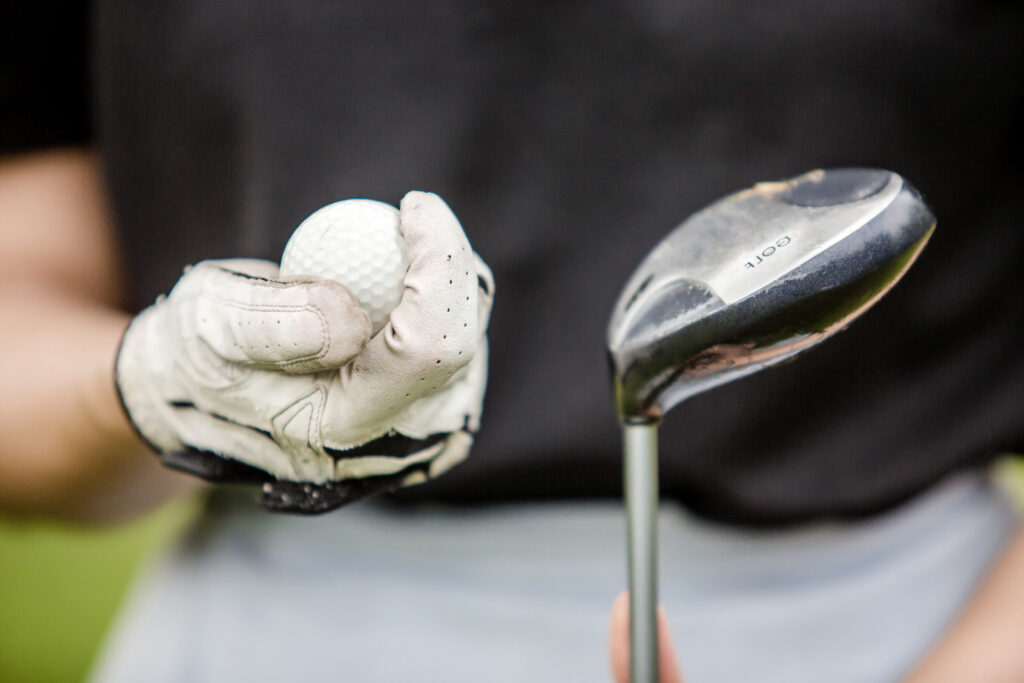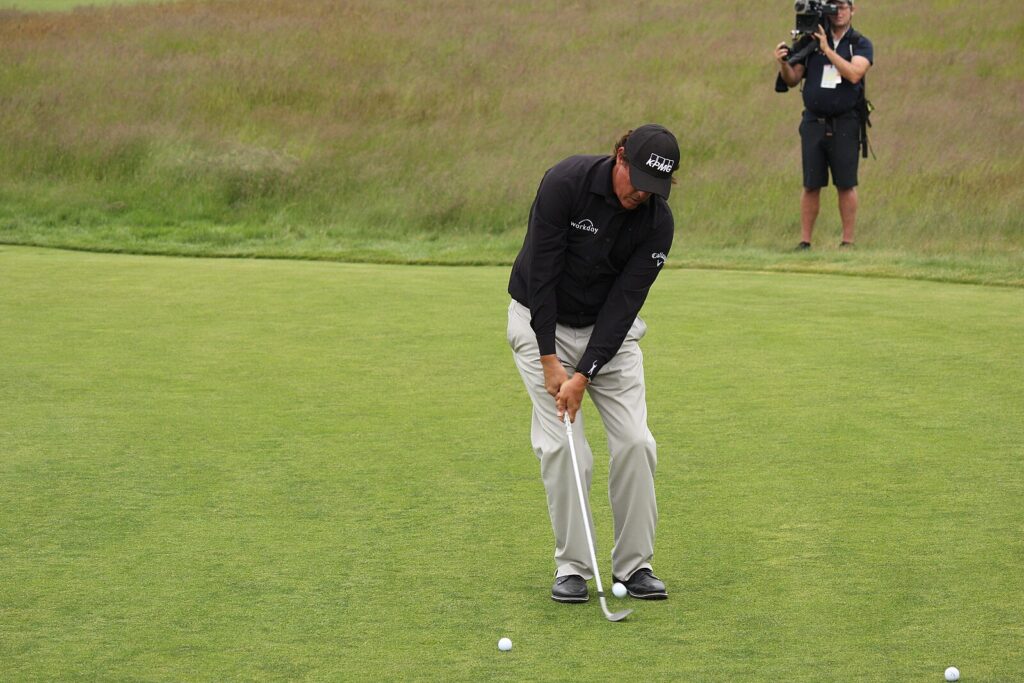Left-Handed Golfers: Mastering the Art of the Proper Golf Grip for Optimal Performance
Posted by
Golf is a sport that demands exceptional skill and precision. The proper golf grip for left hand players is an essential element for optimal performance. The exciting truth is that with the right technique and diligent practice, left-handed golfers have the potential to match the success of their right-handed counterparts. In fact, statistics reveal that approximately 12 percent of golfers swing left-handed, forming a remarkable community that includes some of the world’s top players throughout the history of the sport.

In this blog post, we will share stories of renowned left-handed golfers. We will explore how they harnessed the power of the proper golf grip to reach peak performance. We’ll delve into the methods they employed, the challenges they overcame, and the triumphs they celebrated. By gaining insights from these golfing legends, we can uncover valuable lessons for aspiring left-handed golfers, equipping them with a range of basic steps tailored to their needs. With the right guidance and a commitment to honing their grip, beginner left-handed golfers can make significant strides towards improving their game and experiencing the joy of mastery on the golf course.
Some of the Best Left-Handed Golfers and Their Grip Styles
Phil Mickelson:
Phil Mickelson is arguably the most successful and famous left-handed golfer of all time. He has won 45 PGA Tour events, including six major championships. He is also one of only 12 players to have won a career Grand Slam (winning all four major tournaments). Mickelson can hit any shot from any lie with any club. He is known for his creativity, imagination, and versatility on the course.
Mickelson uses a strong grip, which means that his hands are rotated slightly to the right on the club (from his perspective). This allows him to generate more power and spin on his shots, as well as to shape them more easily. However, a strong grip also requires more control and consistency, as it can lead to hooks or slices if not executed properly.
Bubba Watson:
Bubba Watson, another left-handed golfer, achieved remarkable success on the PGA Tour. He has won 12 PGA Tour events, including two Masters Tournaments. He is also one of the longest hitters on tour, averaging over 300 yards per drive. Watson, known for his unconventional and self-taught swing, relies on his natural talent and feel rather than technical analysis.
Watson uses a neutral grip, meaning that his hands are aligned with the clubface and the target line. This allows him to have more balance and stability in his swing, as well as to adjust his shot shape depending on the situation. However, a neutral grip also requires more precision and accuracy, as it can lead to pushes or pulls if not aligned correctly.
Mike Weir:
Mike Weir, a Canadian left-handed golfer, won eight PGA Tour events, including one major championship (the 2003 Masters Tournament). He is also one of only six players to have shot a 59 in a professional tournament (the 2007 Fry’s Electronics Open). Weir is known for his finesse, consistency, and short game skills.
Weir uses a weak grip, meaning that his hands are rotated slightly to the left on the club (from his perspective). This allows him to have more control and touch on his shots, as well as to hit them straighter and lower. However, a weak grip also requires more strength and speed, as it can lead to loss of distance and height if not swung fast enough.
Basic Steps for a Proper Grip For Left-Handed Beginner Golfers
Regardless of your grip style preference, there are some common and basic steps that you can follow to improve your grip and performance as a beginner left-handed golfer. Here are some of them:
Step 1: Find Your Flow
Begin by selecting a golf club and assume your golf stance. Take a moment to familiarize yourself with the sensation of the club in your hands. Are you holding it too tightly, causing unnecessary tension? Notice your posture—avoid hunching over the club. Allow yourself a few minutes to settle into this position, as a white-knuckled grip will impede your desired results. Pay attention to any discomfort or pain in your hands, neck, or body, as this may indicate an overly tight grip or improper positioning.
Step 2: Proper Club Positioning
Check the alignment of the club face with the ground. The club should be positioned horizontally at waist level. Make sure you are not bending over too much or too little. A slight bend in your knees and a comfortable posture will provide the right balance. If you find yourself bending too much, it may indicate that your clubs are too short for you. Conversely, if you don’t need to bend at all, your clubs might be too long. Experiment with different club lengths to find the one that suits your stature.
Step 3: Establishing the Right Hand Grip
As a left-handed golfer, your right hand plays a crucial role in your grip. Place your right hand on the grip with your fingers relaxed and spread apart. The handle should rest diagonally across your fingers, resting in the right palm. Imagine holding a delicate object like a bird’s egg. This gentle grip will help you maintain control while allowing for fluid movement.
Step 4: Positioning the Top of the Club
Gradually close your right hand around the grip, ensuring that the top of the club’s handle is slightly visible and rests near the base of your right palm. This grip position is exemplified by legendary left-handed golfers like Phil Mickelson. Observe how Mickelson holds the club with the top near his palm. Visualize the stability and control it offers. Emulating this grip style will help you establish a strong connection between your hand and the club. This leads to improved consistency and performance in your game.

Step 5: Integrating the Left Hand
Bring your left hand into the grip by placing it above your right hand on the club. Your left thumb should rest on top of the grip, creating a “V” shape with your left thumb and index finger. The grip should feel secure, but not overly tight. Imagine shaking hands with the club. This two-handed grip will help you maintain control and generate power in your swing.
Step 6: Find Your Comfortable Grip Pressure
Once you have established your grip, check the pressure you are applying. Your grip should be firm enough to maintain control of the club, but not so tight that it restricts your swing or causes tension. Experiment with different grip pressures to find the one that feels comfortable and allows for a smooth, fluid swing.
Wrap up
As a left-handed golfer, you possess a unique advantages and challenges on the course. Learn from the best left-handed golfers in history and following basic steps for improvement. Find the grip that is best for you and elevate your game.
Remember, finding the right grip is a personalized journey based on your preferences, goals, and swing characteristics. Discover what works best for you and enjoy the freedom to tailor your grip to suit your individual style.
If you’re looking for personalized guidance, Skillest is the leading platform for golf instruction. Skillest even has instructors who are left-handed golfers, such as Simon Byford, Greg Chalmers, and Anders Kristians. They can provide expert advice, personalized tips, and specific strategies to help you maximize your potential as a left-handed golfer.
Embrace your unique perspective, take inspiration from golfing legends, follow the steps for improvement, and consider seeking guidance from Skillest’s dedicated left-handed instructors. Remember to have fun and enjoy the wonderful journey of golf as a left-handed player!
